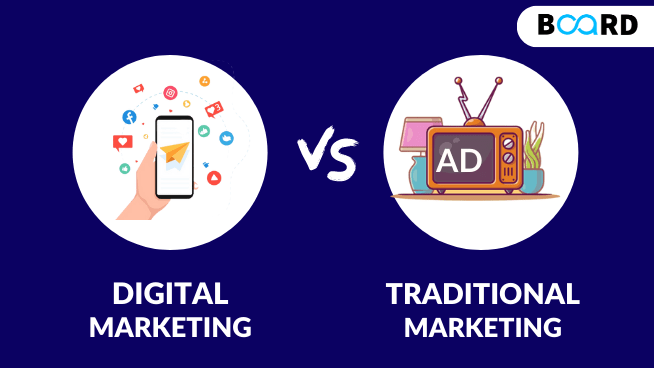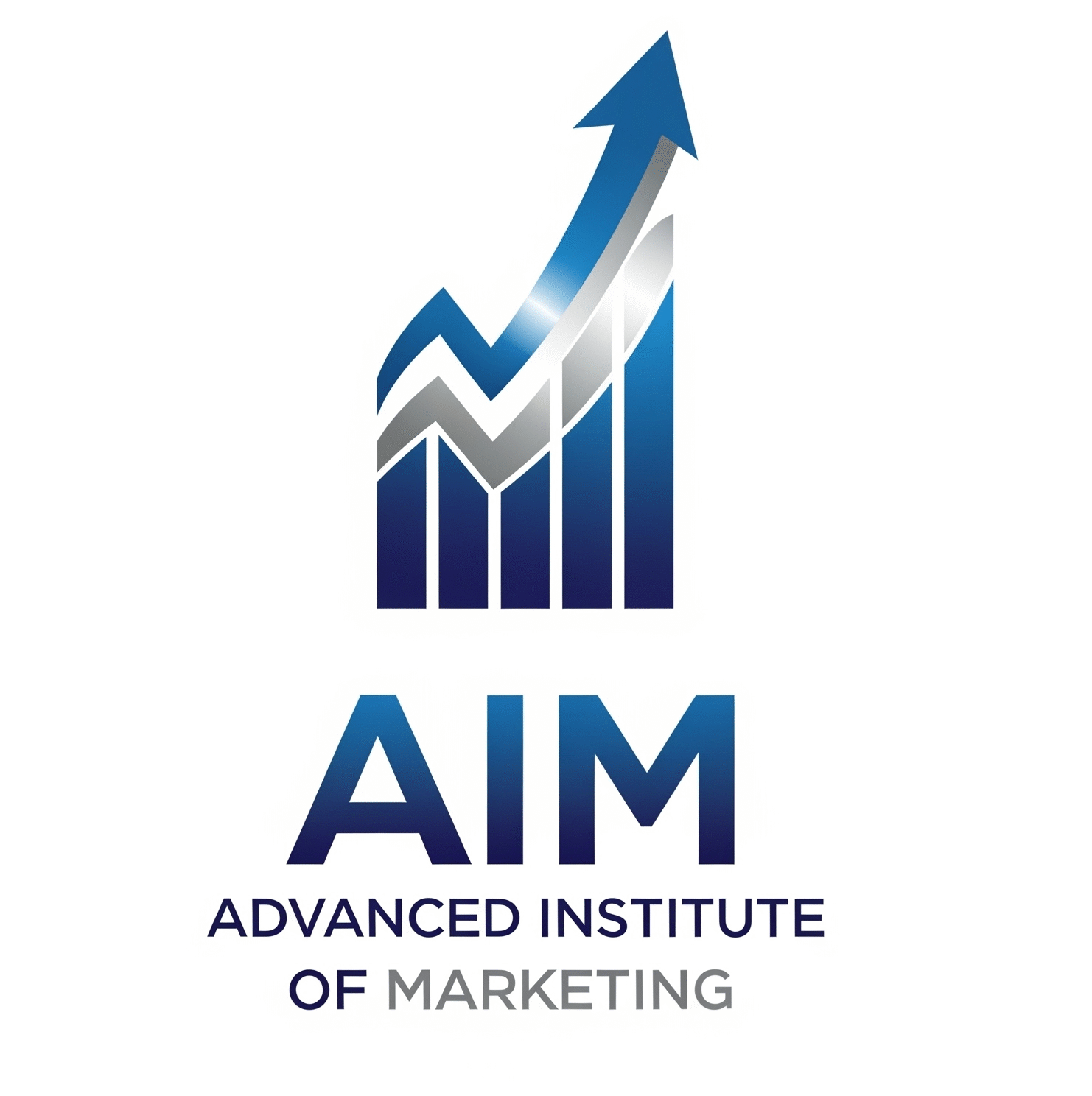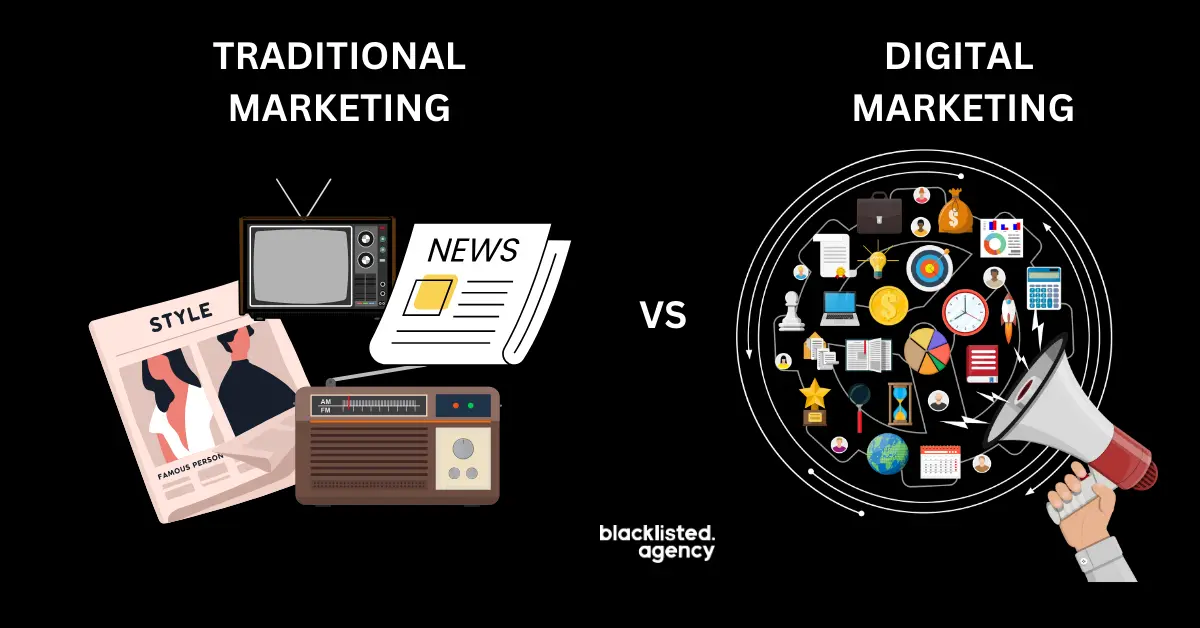
The Difference Between Traditional Marketing and Digital Marketing
The Difference Between Traditional Marketing and Digital Marketing is one of the important factor of marketing. Marketing has always been about reaching the right audience, delivering the right message, and driving results. But in today’s digital-first world, the way businesses connect with customers has transformed dramatically. While traditional marketing still holds value, digital marketing has become the dominant strategy for businesses of all sizes.
Let’s break down the key differences between traditional and digital marketing to help you understand which approach works best.
1. Channels of Communication
- Traditional Marketing: Uses offline channels like TV, radio, newspapers, billboards, brochures, and direct mail.
- Digital Marketing: Uses online platforms such as websites, social media, email, search engines, and mobile apps.
👉 Traditional marketing focuses on mass reach, while digital marketing allows for targeted communication.
2. Audience Reach and Targeting
- Traditional Marketing: Reaches a broad audience but lacks precision. For example, a newspaper ad may be seen by thousands, but not all are potential customers.
- Digital Marketing: Uses advanced targeting tools. Marketers can segment audiences based on age, location, interests, and behavior.
👉 Digital marketing ensures your message reaches the right people at the right time.
3. Cost and Budget
- Traditional Marketing: Often expensive (TV ads, print media, and billboards come with high costs).
- Digital Marketing: More budget-friendly and scalable. Even small businesses can run low-cost campaigns on social media or Google Ads.
👉 Digital marketing offers a higher return on investment (ROI) for businesses.
4. Engagement and Interaction
- Traditional Marketing: Communication is one-way. Customers see the ad but cannot interact with it directly.
- Digital Marketing: Encourages two-way interaction. Customers can like, comment, share, or message brands instantly.
👉 Digital marketing builds stronger relationships with customers.
5. Measuring Results
- Traditional Marketing: Results are hard to measure accurately. For example, it’s difficult to know how many people acted after seeing a billboard.
- Digital Marketing: Provides real-time analytics. Marketers can track clicks, impressions, conversions, and ROI instantly.
👉 Digital marketing makes it easier to optimize campaigns for better performance.
6. Flexibility and Speed
- TM: Campaigns take longer to design, produce, and distribute.
- DM: Campaigns can be created, tested, and adjusted quickly based on performance.
👉 Digital marketing allows for faster and more adaptive strategies.
Final Thoughts
Both traditional and digital marketing have their place. Traditional methods are still effective for brand awareness and local audiences, while digital marketing provides targeted, cost-effective, and measurable solutions for modern businesses.
In 2025 and beyond, the most successful brands will be those that integrate both traditional and digital strategies to maximize reach and impact.

